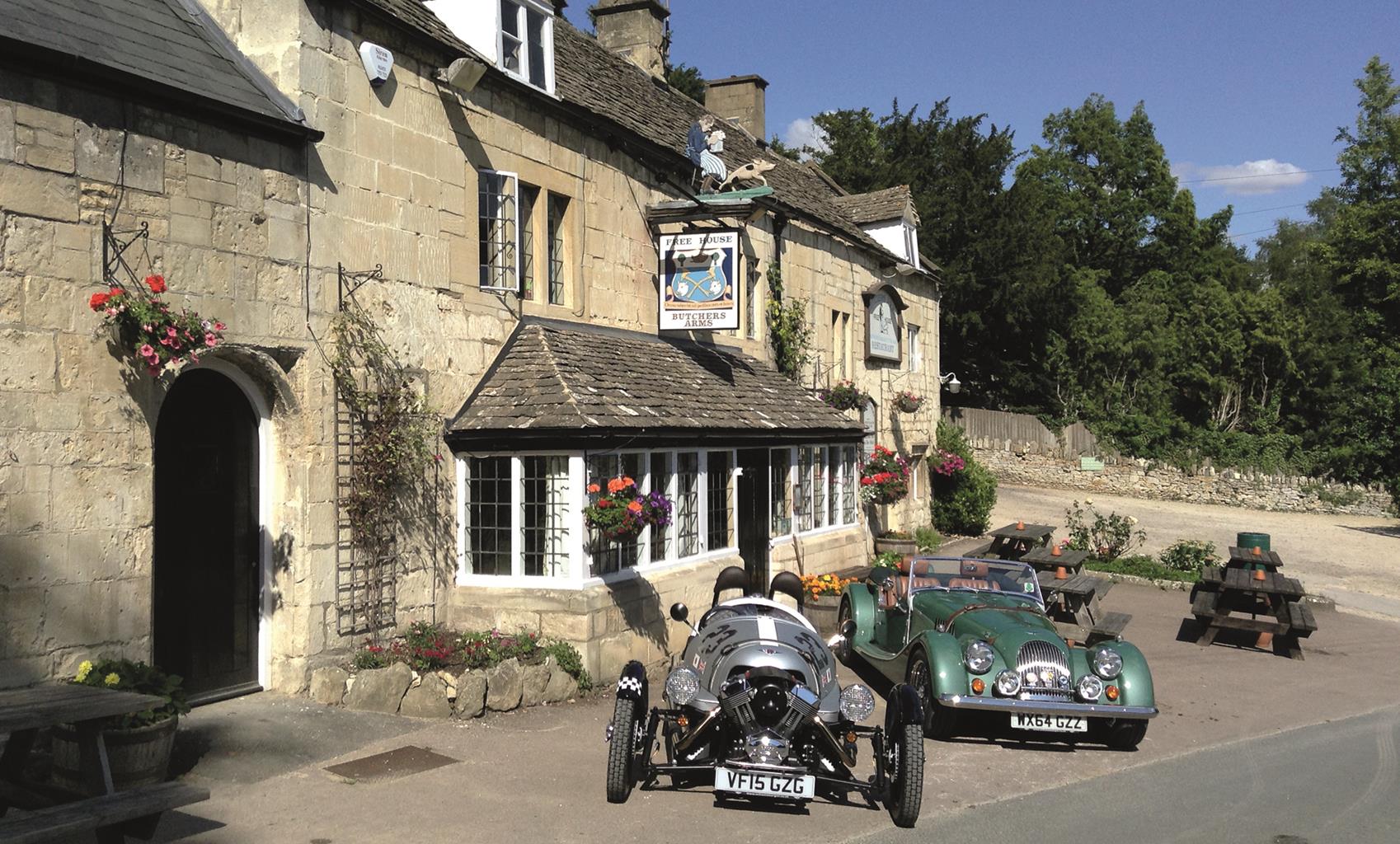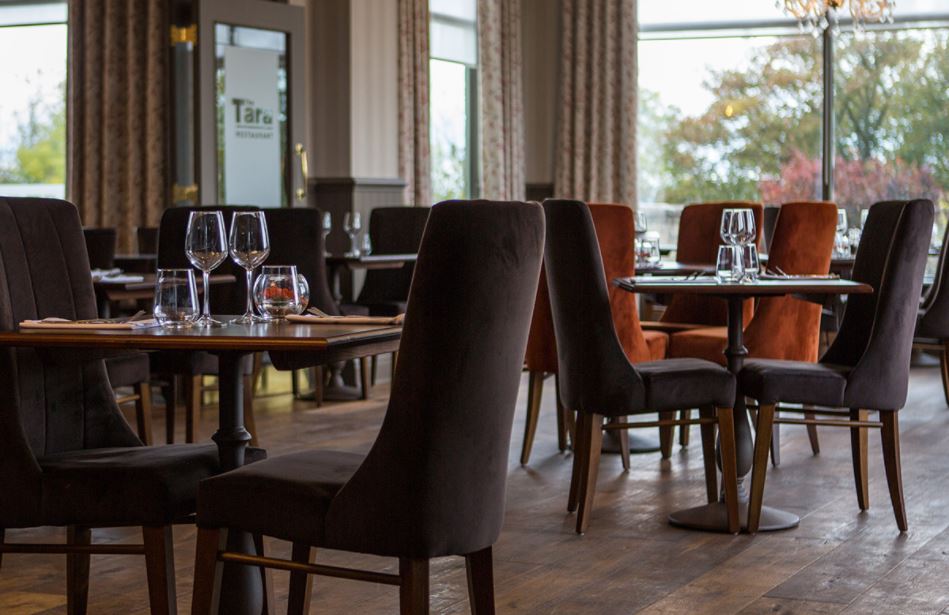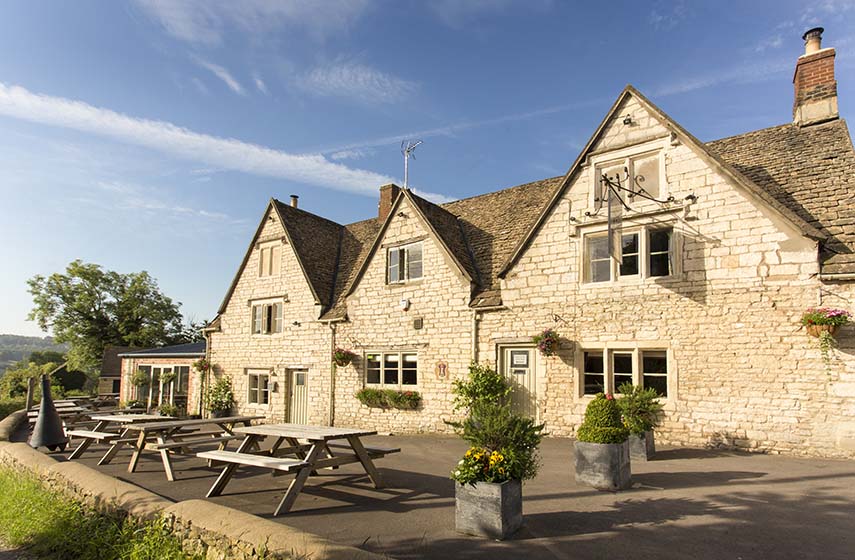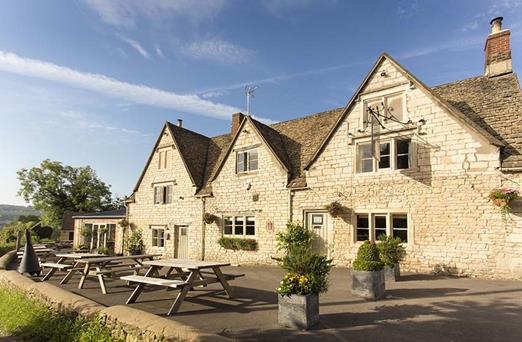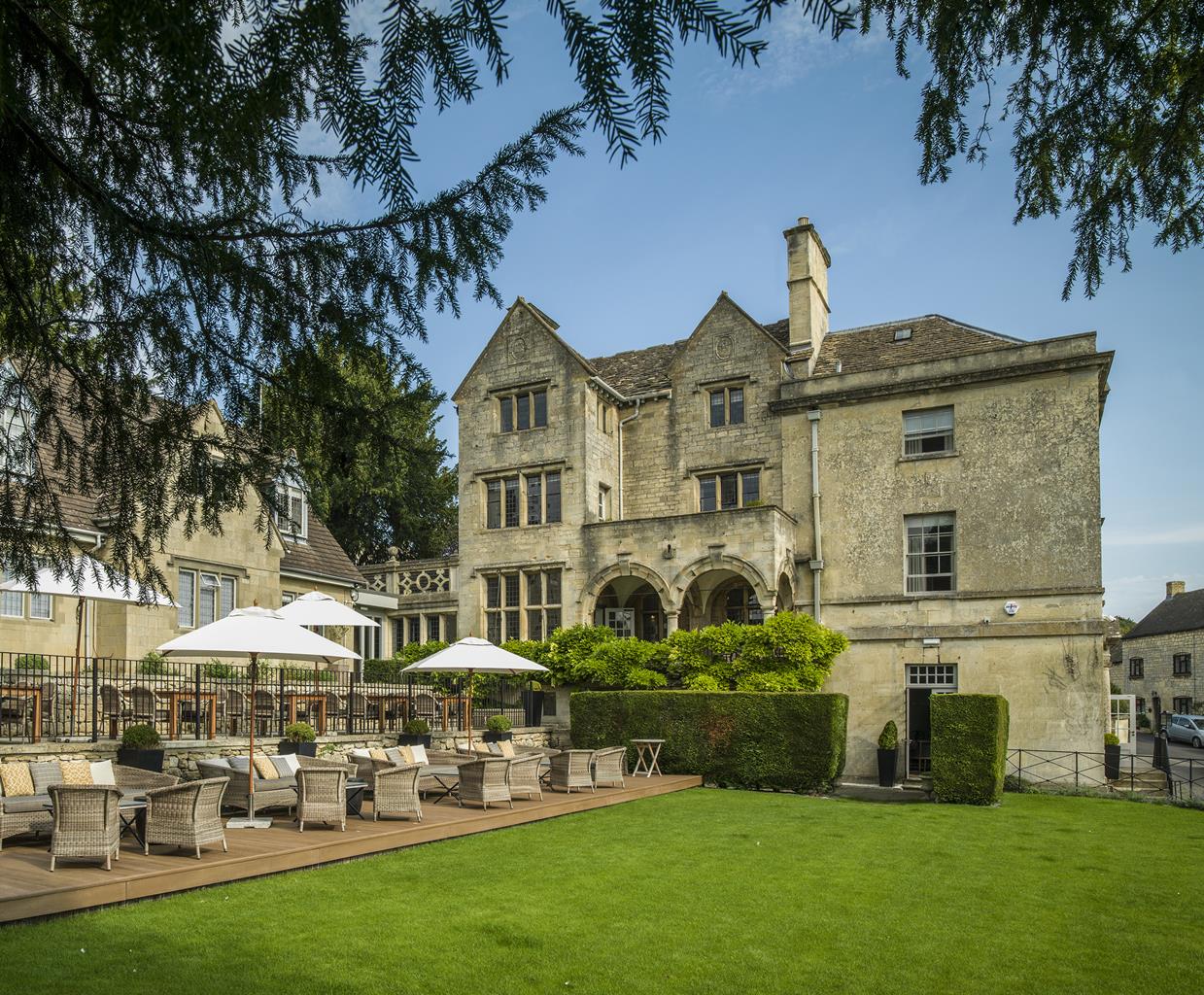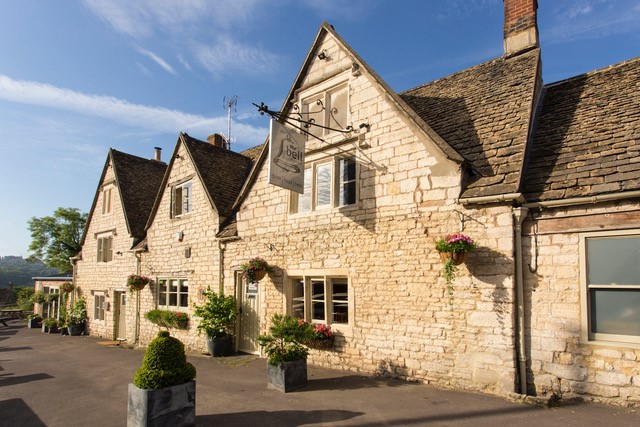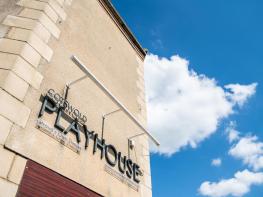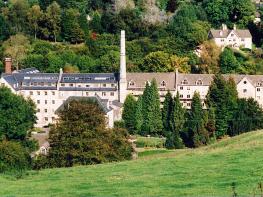The Painswick has had a varied history since being built in the late 18th century, including…
The Slad Valley and Cider with Rosie

A stroll through the countryside around Slad, backcloth to Laurie Lee's most popular novel.
3.75 miles (6kms)
About the walk
The Slad Valley is one of the least spoiled parts of the Cotswolds, and it has a long-standing association with the area’s most important literary figure, the poet Laurie Lee (1914–97). And yet he is not instantly remembered for his poetry, but for his enchanting book, Cider With Rosie. This autobiographical account of a Cotswold childhood has, for thousands of students, been part of their English Literature syllabus.
For anyone visiting the area, Cider With Rosie is well worth reading, but it is especially pertinent here as it is largely set in Slad, where Lee was brought up and lived for much of his life. The book charts, in poetic language, the experiences of a child growing up in a world that is within living memory and yet has quite disappeared. Some of the episodes recounted in the book are said to have been products of Lee’s imagination, but – as he said himself – it was the ‘feeling’ of his childhood that he was endeavouring to capture.
The story of his life is, anyway, an interesting one. Lee spent a considerable time in Spain, and became involved in the Spanish Civil War and the struggle against Franco. Afterwards he established a reputation as a poet, mixing with the literati of the day. He was never very prolific – much of his energy appears to have been poured into love affairs – but he wrote plays for radio and was involved in filmmaking during World War II. It was with the publication of Cider With Rosie in 1959 that Laurie Lee became a household name. Readers from all over the world identified with his magical evocation of rural English life, and the book has not been out of print since.
To some extent Lee became a prisoner of a Cider With Rosie industry. The picture of an avuncular figure living a bucolic idyll was not a strictly accurate one – much of the author’s time was spent in London. He was susceptible to illness all his life, but in his later years he managed to complete his autobiographical trilogy. The second volume, As I Walked Out One Midsummer Morning, published in 1969, describes his journey from Gloucestershire to Spain as an itinerant fiddle player. The third, A Moment of War (1991), recounts his experiences there during the Civil War. Lee died in 1997 and is buried in Slad churchyard. Many of the places in and around the village mentioned in Cider With Rosie are readily identifiable today, such as The Woolpack Inn and old schoolhouse opposite, and the valley remains as beautiful as it ever was.
Walk directions
From Bulls Cross walk to the south end of the lay-by and turn left onto a tarmac-covered footpath, the Wysis Way. Follow it down and, immediately before Trillgate Farm, turn left over a stile into a field. Go slightly right down the field to a stile and gate, then continue up the next field to a gate at the top and turn left along a track. Where it joins another track, stay right and continue walking until you reach a lane.
Turn right and walk to the bottom of the valley. Pass Steanbridge Mill, ignoring a restricted byway soon after on the left. If you want to visit Slad, follow the lane into the village, otherwise turn left along a second restricted byway immediately after a large pond, and walk to a stile. Cross into a field, with a hedge on your right, and continue to a stile at the top.
Cross and follow a path along the right-hand woodland edge to another stile. Follow the left side of the next field and go over another stile, then continue along the path to a stile and gate. Keep ahead through a gate onto a track, staying to the right of Fletcher’s Knapp and curving left. About 30yds (27m) after the curve, turn right onto a wooded path and after 130yds (118m) go right again over a stile into a field. Walk ahead, with the farm above you and to the right. Cross another stile and then keep to the right of a small pond.
At the top of the pond cross a stile into a field. Go straight across it to a gate and stile. In the next field head straight across its lower part. Where the field narrows, go down to cross a stile on the right by a gate and onto a surfaced track. Turn left to meet a lane.
Turn right and follow the lane to the valley bottom. Start to climb the other side and at a corner go over a stile on your right by The Vatch Cottage. Ascend steeply, skirting the garden, to another stile at the road. Turn right along the pavement. After 150yds (137m), bear left onto a public footpath and climb steeply. At a junction with a track, bear left and continue to a field. Follow the right margin of the field up to a stile, then follow the path as it weaves between a fence and dry-stone wall along the edge of woodland.
At the top go over a stile, turn right onto Folly Lane and continue to a junction. If you want to go into Slad, turn right, otherwise continue ahead onto a path that will soon take you through the Frith Wood Nature Reserve. Walk through the woods, finally emerging at your starting point at Bulls Cross.
Additional information
Track, fields and quiet lanes, many stiles
Hills, valleys and woodland
Lead required around livestock
OS Explorer 179 Gloucester, Cheltenham & Stroud
Lay-by at Bulls Cross
None on route
WALKING IN SAFETY
Read our tips to look after yourself and the environment when following this walk.
Find out more
Also in the area
About the area
Discover Gloucestershire
Gloucestershire is home to a variety of landscapes. The Cotswolds, a region of gentle hills, valleys and gem-like villages, roll through the county. To their west is the Severn Plain, watered by Britain’s longest river, and characterised by orchards and farms marked out by hedgerows that blaze with mayflower in the spring, and beyond the Severn are the Forest of Dean and the Wye Valley.
Throughout the county you are never far away from the past. Neolithic burial chambers are widespread, and so too are the remains of Roman villas, many of which retain the fine mosaic work produced by Cirencester workshops. There are several examples of Saxon building, while in the Stroud valleys abandoned mills and canals are the mark left by the Industrial Revolution. Gloucestershire has always been known for its abbeys, but most of them have disappeared or lie in ruins. However, few counties can equal the churches that remain here. These are many and diverse, from the ‘wool’ churches in Chipping Campden and Northleach, to the cathedral at Gloucester, the abbey church at Tewkesbury or remote St Mary’s, standing alone near Dymock.
Nearby stays
Restaurants and Pubs
Nearby experiences
Recommended things to do
Why choose Rated Trips?
Your trusted guide to rated places across the UK
The best coverage
Discover more than 15,000 professionally rated places to stay, eat and visit from across the UK and Ireland.
Quality assured
Choose a place to stay safe in the knowledge that it has been expertly assessed by trained assessors.
Plan your next trip
Search by location or the type of place you're visiting to find your next ideal holiday experience.
Travel inspiration
Read our articles, city guides and recommended things to do for inspiration. We're here to help you explore the UK.


